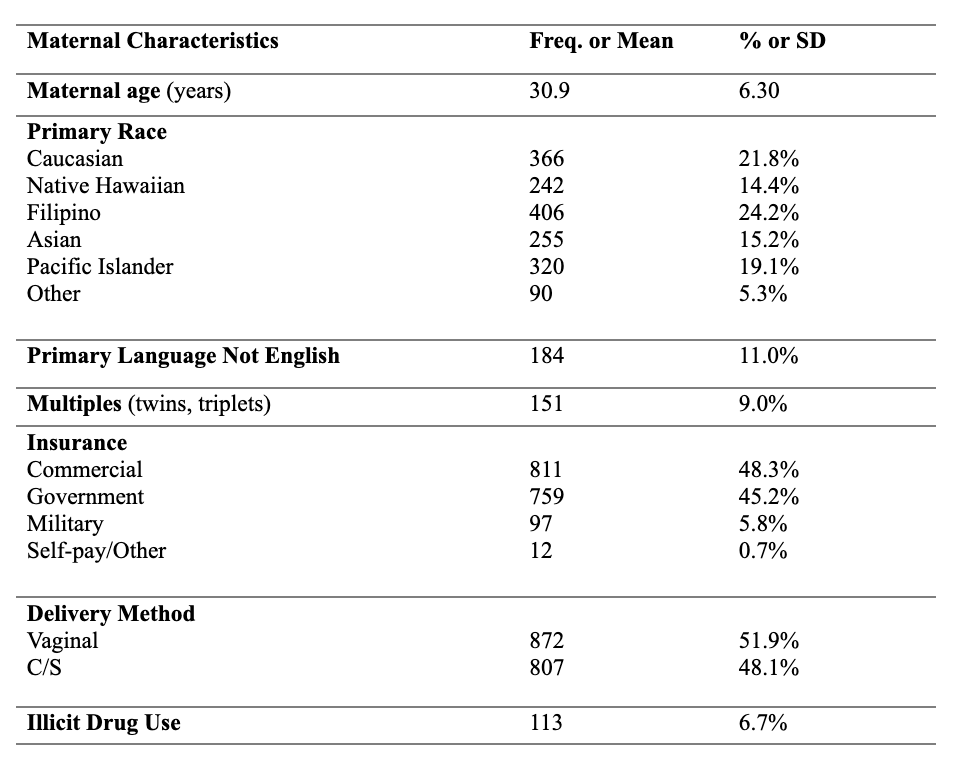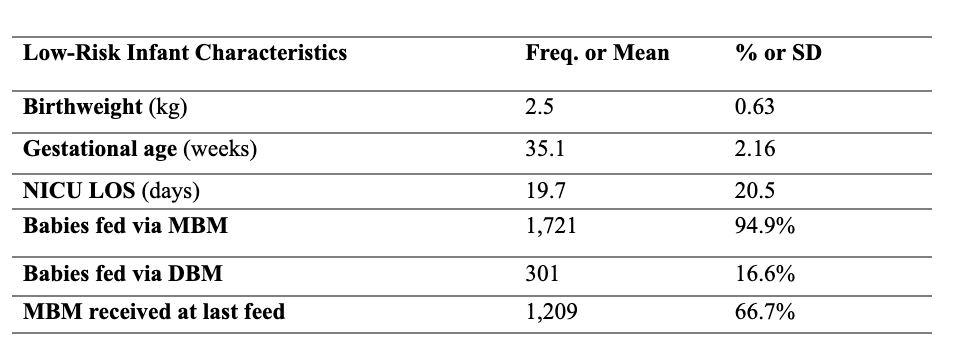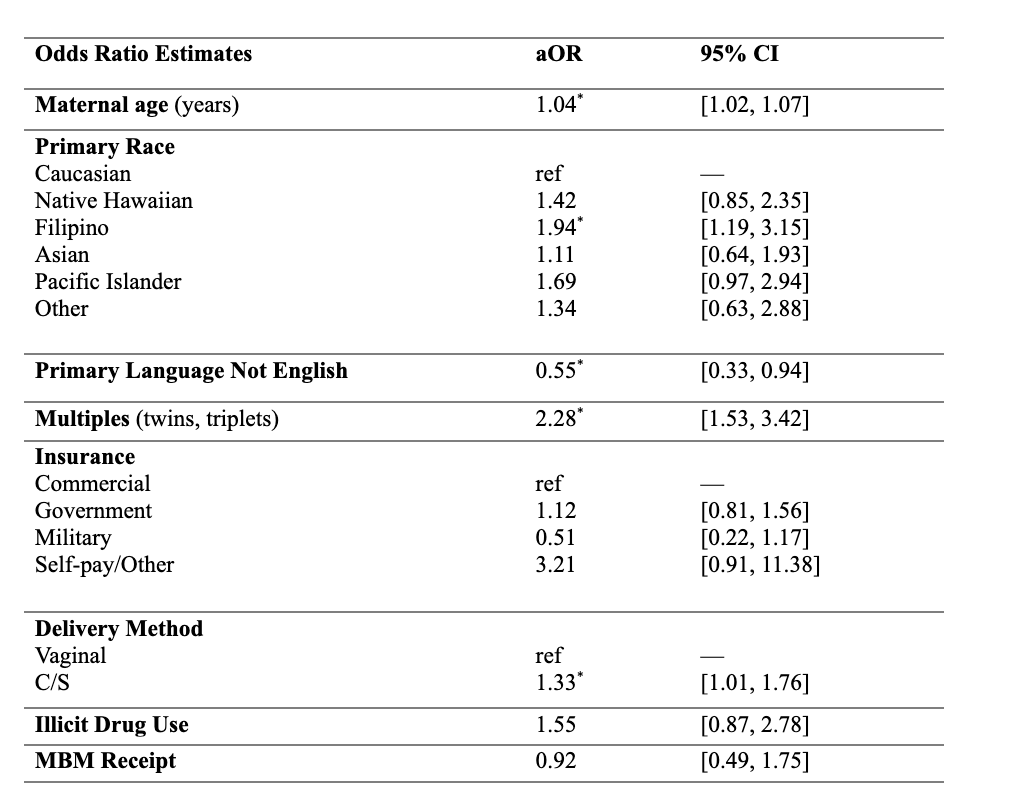Neonatology
Session: Neonatal-Perinatal Health Care Delivery: Practices and Procedures 2
452 - Factors Associated with Donor Breast Milk Receipt in the Neonatal Intensive Care Unit in an Asian Pacific Islander Population
Monday, May 6, 2024
9:30 AM - 11:30 AM ET
Poster Number: 452
Publication Number: 452.3325
Publication Number: 452.3325

Nicole Wong, ScB (she/her/hers)
Student Researcher
Kapi'olani Medical Center for Women & Children
Kaneohe, Hawaii, United States
Presenting Author(s)
Background: Despite the protective benefits of donor breast milk (DBM) against morbidities such as necrotizing enterocolitis (NEC) in preterm infants who are unable to receive maternal breast milk (MBM), previous studies have demonstrated racial disparities in the receipt of DBM among Black and Hispanic infants in comparison to Caucasian infants. Limited data exist regarding DBM use among Asian and Pacific Islander infants.
Objective: To evaluate a predominantly API neonatal intensive care unit (NICU) population for disparities in the provision of DBM among infants at lower risk of NEC (>= 1800 grams birth weight, >= 32 weeks gestational age) who are not routinely offered DBM per unit protocol and thus potentially more vulnerable to provider bias.
Design/Methods: A retrospective chart review was conducted of infants admitted to the largest level 3 NICU in Honolulu, Hawaii from 2018-2022. A total of 1,814 mother-baby dyads were analyzed after excluding infants hospitalized < 1 week, with medical contraindications to receiving enteral feeds, or transferred to an outside hospital. Multivariable logistic regression was performed to calculate adjusted odds ratios (aOR) for use of DBM while controlling for maternal age, race, primary language, multiple gestation, insurance, delivery method, maternal illicit drug use, and infant receipt of MBM.
Results: Distribution of mother’s race was predominately Filipino (24.2%), Pacific Islander (19.1%), and Native Hawaiian (21.8%). 11% did not speak English as the primary language and 16.6% of infants received DBM. Filipinos were more likely to receive donor breast milk when compared to Caucasian infants (aOR 1.94 [1.19, 3.15]). Mothers who did not speak English as their primary language were less likely to use donor milk (aOR 0.55 [0.33, 0.94]). Older maternal age, multiple gestation, and cesarean section delivery were also associated with a higher likelihood of receiving DBM.
Conclusion(s): Asian and Pacific Islander NICU infants did not have a decreased likelihood of donor milk receipt in comparison to Caucasian infants. However, there are disparities in the receipt of donor milk for mothers who did not speak English as their primary language, which may represent insufficient patient education of the benefits of donor milk, cultural differences in the acceptance of DBM, or bias among providers in their likelihood of offering DBM for this population. Further research through targeted focused groups to interview both NICU staff and patients who primarily speak non-English languages and investigation into other social determinants of health are needed to address this disparity.



